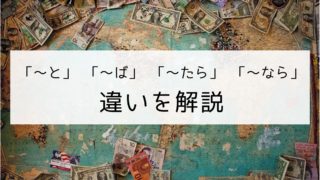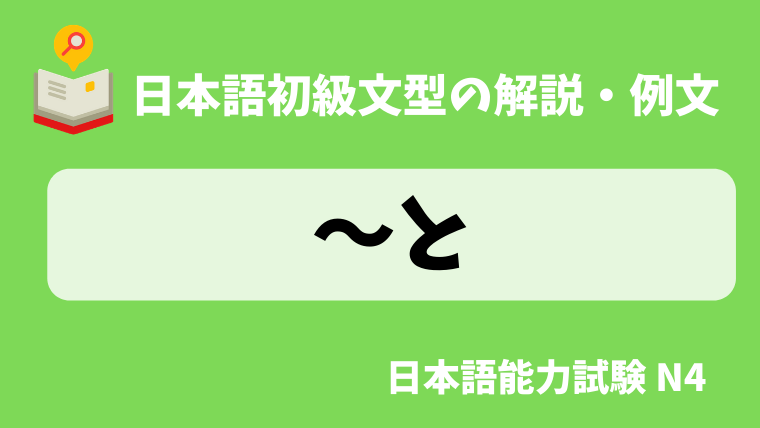(2025/12/31 11:17:56時点 Amazon調べ-詳細)
解説:〜と
●意味
ある動作を行うと、必ず、別の事柄や作用が続いて起こることを示す(恒常的なことを述べる時に使う)。
機械の使い方や道順の説明によく使われる。
It indicates that when a certain action is performed, another event or effect inevitably follows (used to describe constant or habitual occurrences).
It is often used in explanations of how to use machines or in giving directions.
●接続
V(辞書形 / ナイ形)+ と
イAい + と
ナAだ + と
Nだ + と
●日本語能力試験(JLPT)のレベル
N4
●備考
①仮定条件には使えない。
It cannot be used for hypothetical conditions.
例:宝くじで100万円当たると、何を買いますか?
②依頼や命令文などで使えない
It cannot be used in requests or imperative sentences.
例文
春になると桜が咲きます。
When spring comes, the cherry blossoms bloom.
冬になると鍋が食べたくなりますね。
When winter comes, you start craving hot pot, don’t you?
この道をまっすぐ行くと、病院がありますよ。
If you go straight down this road, you’ll find the hospital.
このボタンを押すと、音が大きくなりますよ。
If you press this button, the sound will get louder.
お金を入れて、食べたい料理のボタンを押すと食券が出ますよ。
Insert money and press the button for the dish you want, and a meal ticket will come out.
毎日シャドーイングをすると、話すのが上手になりますよ。
If you do shadowing every day, you’ll become better at speaking.
部屋が綺麗だと気持ちがいいですね。
When the room is clean, it feels good.
70点以上だと合格です。
A score of 70 or above is a pass.
成績が悪いと、卒業できませんよ。
If your grades are poor, you won’t be able to graduate.
「〜と」「〜ば」「〜たら」「〜なら」の違い




